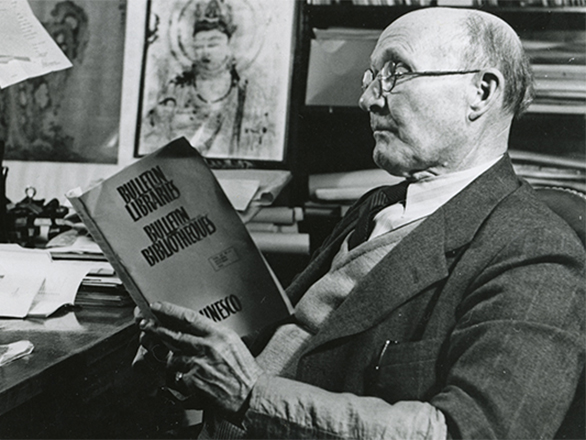
Few are able to recall the earliest days of the arts on campus when visual arts were taught in Quonset huts in a nearby neighborhood. Music classes were offered by the education department and drama courses were occasionally taught within the English department.
In 1955, the arts disciplines finally reached departmental status and just five years later, the Church Fine Arts building was completed. Named after James Edward Church, a professor of Latin, German, classical art and history (1892-1959) and founder of what is now the Nevada Museum of Art, the Church Fine Arts building provided the first unified arts space for students and faculty.
With a growing demand for arts facilities and classes, this building expanded during the 1980s to include additional classroom space, a concert hall, a gallery exhibition area and a small theatre, enabling greater attendance and participation in the arts by members of the community.
History of the Department of Art
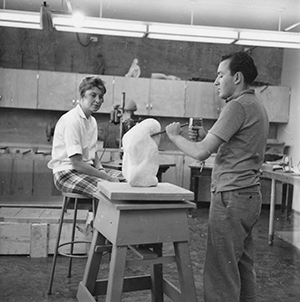
The Department of Art traces its origins to 1905 when Katherine Lewers was hired to teach drawing to teaching, engineering and home economics majors. Fueled by education investment following WWII, the department began a trajectory of development kicked off with the hiring of Craig Sheppard in 1947.
Sheppard grew course offerings to include painting and sculpture, hired Edward Yates in 1952 and eventually helped move the department in 1960 from Quonset huts on the east side of campus into the Church Fine Arts building designed by famed modernist architect Richard Neutra.
Sheppard curated an impressive exhibition of 70 works by 50 museum-collected artists including Giacometti, Picasso, Degas and Matisse. This exhibition marks the foundation of the department's exhibition and collecting programs that would grow into University Galleries, the campus museum of art.
Throughout the 1950s and 60s, the department added several faculty members to create areas of study in ceramics, printmaking, drawing and art education.
In the 1970s and 80s, art history, photography and digital media courses were added as well as a bachelor of fine arts degree. The expanded offerings required more space and a major addition in 1987 to the Neutra building, now called Church Fine Arts.
In 2006, the master of fine arts degree was added. Around this time, the School of the Arts was formed, which constituted the Department of Art, the Black Rock Press and other programs.
History of the Department of Music
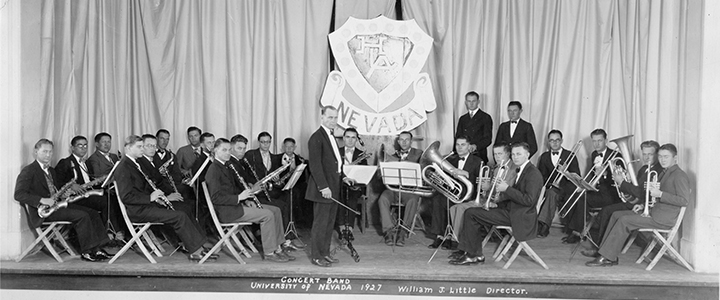
Music has been an integral part of campus life since 1899, when a cadet band and choral groups could be seen and heard performing on campus, throughout the city and even before the state legislature. In 1927, Theodore Post, Ph.D., arrived with a degree from Harvard. In addition to teaching, he realized his dream of assembling a community orchestra, with students and faculty performing alongside professional musicians. In those days, music was housed in the department of education. By 1955, the various arts disciplines had finally achieved departmental status. In 1959, John Carrico, Ph.D., joined the department, helped organize jazz events on campus and founded the Reno Jazz Festival. In 1960, the new Church Fine Arts Building provided the first unified physical space for students and faculty in the arts.
The vocal studies program owes its roots to Ted Puffer, who joined the University in 1966 as a professor. His dedication to teaching and recruiting talented students was matched by his desire to build an opera company in Reno.
History of the Department of Theatre and Dance
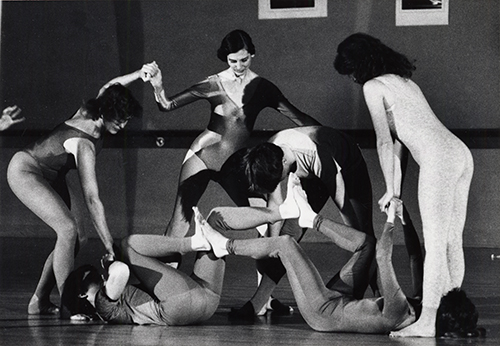
Dance has a long and rich history at the University of Nevada, Reno. Beginning in the 1950s, dance classes were offered through physical education.
With the opening of the Lombardi Recreation Center in 1976, dance classes were held in recreation rooms and programmed through the department of physical education (later becoming the department of recreation and physical education) through the 1990s.
It wasn't until 2004, that dance became part of the liberal arts curriculum by joining the Department of Music. Dance united with theatre in 2010 by forming the current configuration of the Department of Theatre and Dance.
In 2018, dance received four dedicated studio spaces with renovations in the former Lombardi Recreation Center. With a dance major and minor, the dance division now offers an array of classes in dance techniques, dance choreography, dance history and theatre production. Two mainstage dance productions and several informal performances are showcased annually.
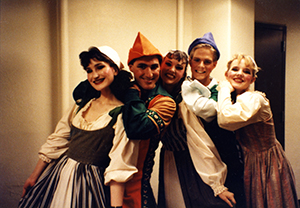
From the time of Nevada's admission to statehood, theater has been a prominent part of the Nevada experience. Virginia City, Nevada was not only a mining metropolis, it also served as one of the theatrical centers of the west and was home to four-to-six professional theaters at any given time. Internationally prominent thespian and theatrical troupe itineraries regularly brought productions to northern Nevada. Theater has a long history on the University of Nevada, Reno campus as well. As a student organization, the Reno Dramatic Club gave its first performance on November 12, 1892. (The Knowledge Center's Special Collections department has a copy of the official club constitution and by-laws). Members paid a $2.50 initiation fee and monthly dues of 25 cents.
In the latter quarter of the 20th century, the producing arm of the department of communication studies and theatre became known as the Nevada Repertory Company. While the current iteration still maintains a company mindset, it is now known as, the Department of Theatre and Dance. Each year, the department produces three-to-four theatre productions and two dance productions, along with a number of informal showings of work in both dance and theatre classes.